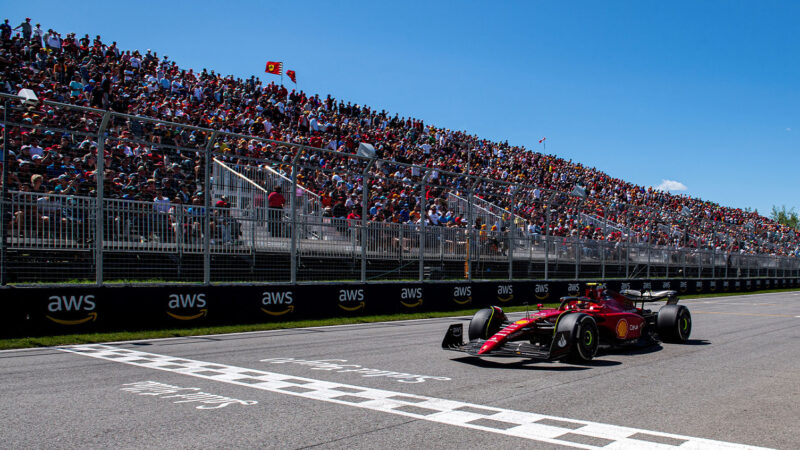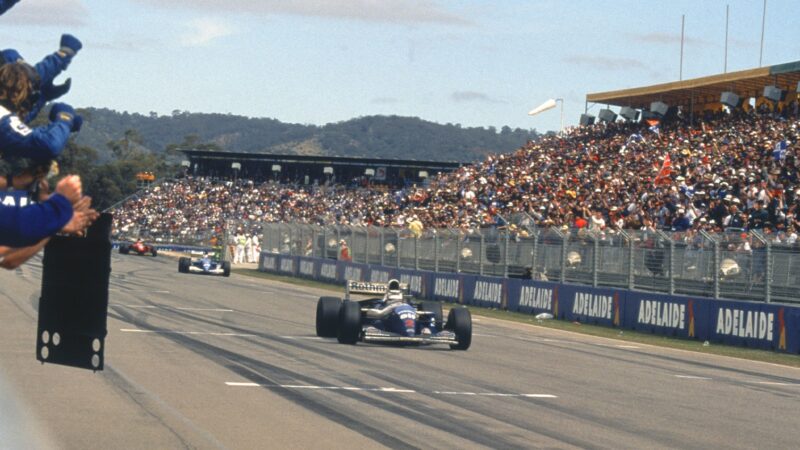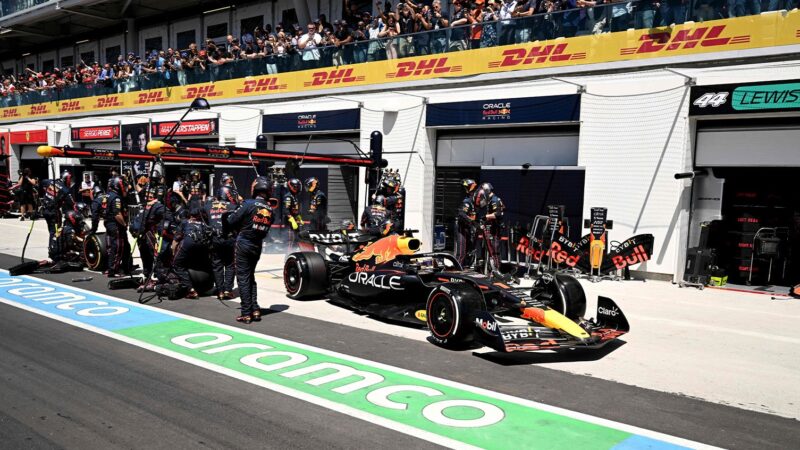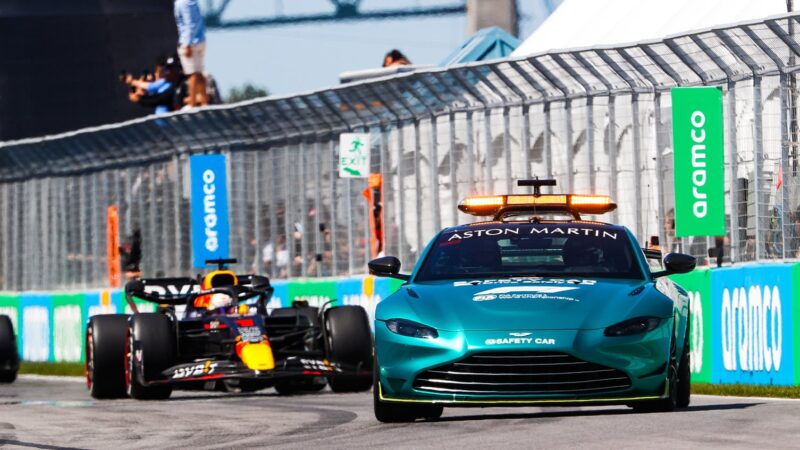Alternative ending to the 2022 Canadian GP that we'll never know
The Canadian GP ended with Carlos Sainz fighting for a way past Max Verstappen. But, says Mark Hughes, in a race of tricky tyres and tricky choices, we had been set to watch Verstappen hunting down Sainz — until the safety car intervened

Sainz crosses the line in Montreal
Ferrari
Upon Montreal’s return to the F1 calendar after its Covid-imposed three-year absence, Max Verstappen made it five wins from the last six and six from nine in the season to date. He faced a stern challenge from Carlos Sainz’s Ferrari, one which lasted pretty much the whole distance. But with Charles Leclerc’s sister car starting from the back row because of the installation of its fourth power unit of the season, Verstappen’s task was automatically made a chunk easier.
The Mercedes was nowhere near as bad a car on race day as the bucking monster it had seemed on Friday. Raising its ride height and softening its suspension gave it much better manners and returned it to the status of third-fastest car. Lewis Hamilton took it to third place a few seconds ahead of team-mate George Russell (whose attempt at using slicks at the end of wet qualifying had backfired and left him starting eighth). Towards the end of the stints the Merc could lap comparably fast to the two scrapping leaders. But that was a misleading picture, given by the higher tyre degradation Verstappen and Sainz were forcing upon each other.
Leclerc was able to make it up to fifth by the end but it had been a hard, sometimes frustrating slog, caught in DRS trains and without the traction out of the Turn 10 hairpin necessary to make passes at the end of the straight. A slow pit stop from a stuck wheel dropped him into the traffic he’d just spent an age clearing when stuck in that earlier train. Ferrari had given him a smaller wing than Sainz to help with the overtaking. But it didn’t help.

The last driver in his 40s to qualify on the front row won — in Australia ’94. It wasn’t to be for Alonso
Grand Prix Photo
Fernando Alonso, who’d become the first guy in his 40s to qualify on the front row since Nigel Mansell in 1994, couldn’t maintain such form into the race. He got an unlucky break when the second of two VSCs came just as he was past the pit entry. That left him trying for a one-stop on a day when the track was just too hard on the tyres for that to work if you’d started on the mediums. To cap it all, his engine lost a chunk of power after about 20 laps and it needed the help of team mate Esteban Ocon’s DRS to keep him ahead of Valtteri Bottas’s Alfa at the end. That and a bit of Alonso weaving, which got him a 5sec penalty and dropped him two places to ninth, with Zhou Guanyu also benefitting after an impressive weekend for Alfa. He’d earlier been battling with fellow rookie Mick Schumacher, but the latter retired from a strong seventh place on a weekend in which Haas locked out row 3 of wet qualifying.
VSCs, tricky tyres & tricky choices
Those two VSCs and a later safety car helped give this race its shape and insistent dynamics. That and the unexpectedly tricky tyre behaviour. The soft C5 was too delicate for here, the C4 medium was better but tended to grain its fronts quite easily. The C3 hard was the best. All the top 10 chose to start on the medium, so as to keep the one-stop option open by seeing how far it would go.
The first VSC came for Sergio Perez’s Red Bull, which had qualified only 13th after crashing out in Q2. Just eight laps into the race it suffered a transmission failure and Checo pulled off at Turn 9. Ironically, this was great timing for team mate Verstappen, in the lead. His fronts were graining. The VSC got him the cheap stop and a fresh set of tyres before any harm had been done. Sainz, who’d been running about 3sec behind, stayed out. Which committed Verstappen to a two-stop with Ferrari trying to keep new leader Sainz on a one.

Early stop relieved Verstappen from graining tyres, but committed him to another visit to the pits
Jim Watson/AFP via Getty Images
Alpine left Alonso out, Mercedes brought Hamilton in but left Russell out (as he hadn’t cleared enough traffic to drop into a gap).
The second VSC came after the lap 19 retirement of Schumacher with a PU-related issue. This allowed Sainz to match Verstappen’s earlier cheap stop but late enough into the race that he could remain on his one-stop attempt. Mercedes brought Russell in and thought about trying to one-stop him, but later abandoned that thought. Alonso, running third, had just passed the pit entry when this VSC was triggered. His doomed subsequent attempt at a one-stop lost him a lot of time on very old rubber and a place to team-mate Ocon.
With Verstappen pitting for his second stop after 42 laps, Sainz assumed the lead, 11sec ahead of the rejoining Red Bull. Max had 28 laps left in which to make up those 11sec and pass the Ferrari. Red Bull believe he would have done so. Sainz is not so sure. But things were about to change.

Sainz’s stop under the safety car made him the hunter
Antonin Vincent / DPPI
Safety car
Yuki Tsunoda hit the turn 2 barriers after pitting on lap 48, losing control over a bump. This brought a full safety car – which presented Ferrari with the choice of pitting Sainz and surrendering the lead to Verstappen or being vulnerable on very old rubber at the restart, with Verstappen’s much newer-tyred car right behind. They opted to pit.
That’s what put in place the 16-lap chase sequence around the Circuit Gilles Villeneuve, with Sainz never out of Verstappen’s DRS, but Max delivering that fantastic high-pressure victory drive.

